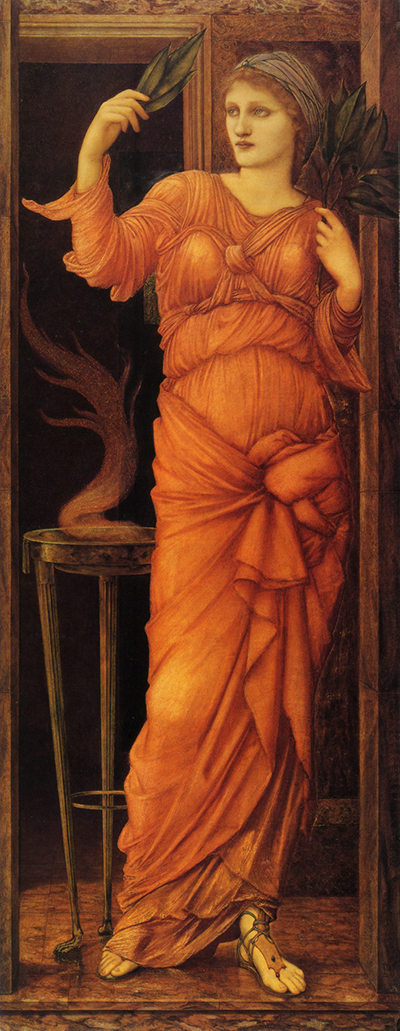Sir Edward Coley Burne-Jones' Greek mythology painting Sybilla Delphica was painted in 1868. It is a female portrait, as many of Sir Edward Coley Burne-Jones' paintings are. This one is set in ancient Greece. It features the figure of an orange-robed priestess discerning her readings from laurel leaves.
Housed in the Manchester Art Gallery, it is basically an oil-on-panel painting. It is one of many dramatic and striking paintings by this prolific artist. He painted many scenes from mythology and fiction. His paintings are in demand even today and many of his admirers order hand-painted copies of his works. He was considered a star of the aesthetic movement in his time. He was commissioned to paint many scenes from Greek mythology. He painted mostly in oils, although his watercolours are worth a look too.
The main thing which strikes people as they look at his paintings is the quality of drama and intense colour. His brushstrokes brought so many scenes to life from mythology and fiction, endowing them with vibrancy and colour. He could take a scene from a story and bring it to life. He had a particular talent for painting pictures of beautiful and mysterious women. An English artist of the 19th century, Sir Edward Coley Burne-Jones was born in 1833 and died in 1898. He was a part of what came to be known as the pre-Raphaelite movement in British art. He was dedicated to art and pursued it in many forms. Not only in paintings, although he was a prolific painter.
His work in oil and watercolour are still admired today for their style and drama. His body of work also includes some notable stained glass windows, which are to be found in historic churches throughout England. However, his interests in art and craft extended beyond dramatic paintings and windows. He also designed jewellery and ceramic tiles. He has also left his artistic mark behind in some beautiful tapestries and mosaic designs. He truly enjoyed art to the fullest and left behind many rich and beautiful artistic works for us to enjoy. His reproduction of the mythological priestess, Sybilla Delphica, show us a man who is sensitive, with a love of beauty and an eye for every detail.




